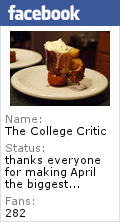Before beginning a multi-hundred mile trek, Stebbins climbs “onto the lowest branch of a pine overlooking the road and was eating what looked like a jelly sandwich.” Stebbins sustains his energy throughout the trek with jelly sandwich after jelly sandwich, an endless parade of white bread and jam. In The Long Walk, Stephen King (writing as Richard Bachman) describes a dystopic death march—a bunch of teenage boys start out on a walk that ends when only one competitor remains standing. Stebbins’ jelly sandwiches fascinate the narrator throughout the text, providing a counterpoint to grim scenes of macabre exercise.
Fortunately, the marathon concludes after 26.2 miles, not when all the racers expire from exhaustion. Although eating jelly sandwiches, dinner rolls, turkey, and chocolate chip cookies is common during ultramarathons, most marathoners eschew eating such heavy foods. Instead, race nutrition involves “gels”—little packets of gooey syrup that only taste good when the body truly screams for sustenance. I didn’t use gels during my first marathon, and I don’t intend to this time—I found that I only benefited from gels when completing multiple long runs consecutively: two 17 mile runs in a row, for instance.
More important than eating while running, in my opinion, is proper pre-race nutrition. Conventional wisdom dictates that long distance runners should increase the percentage of carbohydrates in their diets. The exact method of carbohydrate “loading” remains controversial, especially when considered in the context of the “taper”—the immediate decrease in weekly mileage before a marathon. Nevertheless, most authorities seem to agree that carbohydrates need to make up a greater proportion of a marathoner’s net caloric intake, and that complex carbohydrates prove a particularly critical category for maximization. Simply eating a big pasta dinner the night before a marathon isn’t enough though; prior to every long run, the body needs to maximize its glycogen stores. Therefore, the night before any long training run, try to “carbo-load.”
Avoiding fatty, heavy cream sauces seems wise in order to minimize intestinal discomfort; spicy, protein-heavy toppings are also problematic. Of course, pasta with red sauce becomes tiresome after a few weeks. Here are a few alternative suggestions for carbo-loading on a weekly basis.
1. Soba: Soba is a kind of Japanese noodle made from buckwheat flour. Supple and elastic, these grayish-brown strands seem to bounce off the teeth like live wires. Light but filling, soba offers a solid option in lieu of Italian standards. Paired with a refreshing bonito or pork broth, soba settles better with me than most filled pasta dishes.
2. French Toast: Breakfast for dinner! One night this past summer, I felt an overwhelming craving for a mountain of French toast. Following a 16 mile training run and before another 16 miler the next morning, I made myself six slices of challah French toast. Soaked in a mixture of egg, milk, sugar, and salt, the bread cooked up custardy and dense. With protein from the egg whites and enough carbohydrates to fuel a Clydesdale, the French toast made a perfect cross-over recovery/carbo-loading meal. Drizzled with chai spice infused maple syrup, the toast made a training meal joyful and delicious.
3. Polenta: Think outside the pasta box if Italian is a must-have for pre-run dinners. Simple to the point of asceticism, polenta tastes creamy and rich without stomach-upsetting dairy and fat components. Flavored with stock and topped with eggs, grilled chicken, and a slice of summer tomato, polenta is a great choice for Italophile runners done with lasagna.
While I eat a lot of (peanut butter) and jelly sandwiches during the week, I am no Stebbins—I need something more substantial before I take off on a long walk or run. This French toast recipe (see #2) gets the job done.
Ultramarathon French Toast
1/2 loaf challah bread
3 eggs
1 cup milk
3 tbsp sugar
1 tsp salt
1/8 cup maple syrup
1 tbsp butter
Combine eggs, milk, sugar, and salt in a large bowl. Whisk until the mixture is just frothy and the sugar has begun to dissolve. Slice the challah into 1 inch thick pieces. Heat the butter in a large cast-iron skillet over medium heat. When the butter is completely melted and just below its smoke point, dip each slice of challah in the egg mixture until it has completely absorbed the liquid. Then, cook the challah slices on one side until well-browned. Turn and continue to cook until well-browned all over. Serve with maple syrup.

